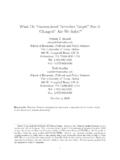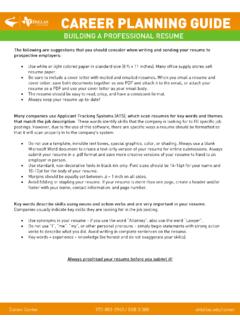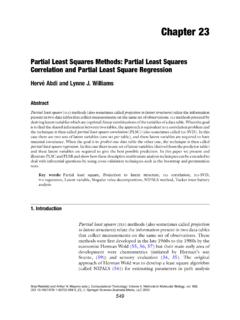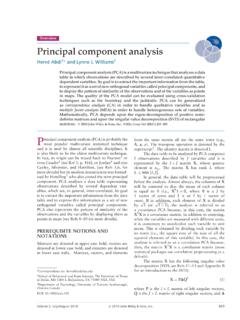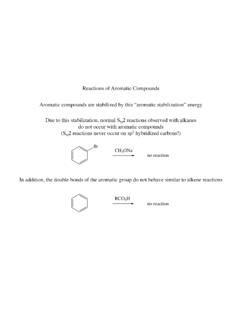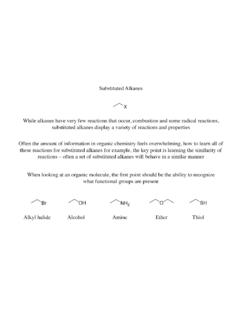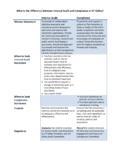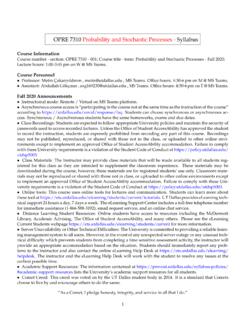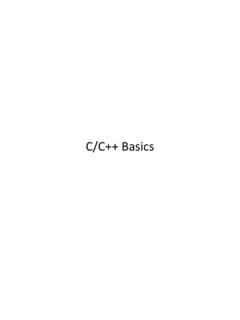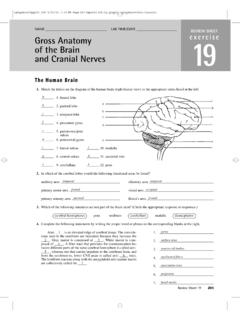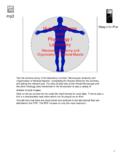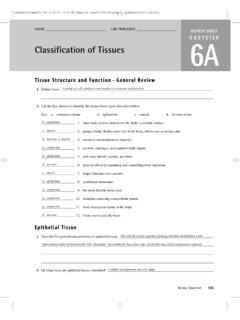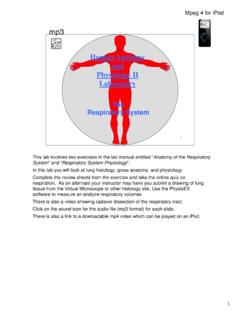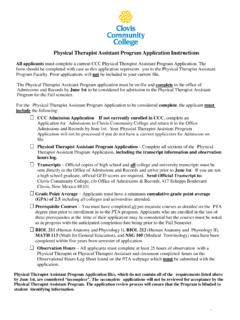Transcription of Excel Basics for Account Reconciliation
1 Excel Basics for Acct Recon Training Guide 1 Excel Basics for Account Reconciliation 2 Excel Basics for Acct Recon Training Guide Table of Contents Introduction .. 5 Overview .. 5 Course objectives .. 5 Lesson 1 Getting Started .. 6 Overview .. 6 Downloading from Account Reconciliation .. 6 Anatomy of a Spreadsheet .. 8 Starting the Program ..10 Navigating in a Workbook ..11 Selecting Cells Range in Workbook ..13 Moving around in a range of cells shortcut keys ..14 Selected non-adjacent cells Customizing the Quick Access Toolbar ..15 Exploring the Ribbon ..15 Using Dialog Box Launchers ..16 Minimizing and Expanding the Ribbon ..17 Exploring the Backstage View ..17 Getting Help ..18 Getting Help While You Work ..18 Lesson 2: Basic Workbook Skills .. 19 Overview ..19 Moving around a worksheet ..19 Navigating with the mouse ..19 Navigating with the keyboard ..20 Selecting Ranges ..21 Saving and updating workbooks.
2 24 Saving a file ..24 Saving Workbook in a different format ..25 Summary Notes ..27 Review Questions ..28 Case Study Create Worksheet from Actuals transactions ..29 Lesson 3: Modifying a worksheet .. 30 Overview ..30 Text and values ..30 Overflow text and values ..30 Editing text and values ..31 AutoFill ..32 Formatting Cells ..33 Borders and Shading ..33 Excel Basics for Acct Recon Training Guide 3 Apply Font Shading ..34 Filter your data ..34 Moving and copying data ..34 Inserting and Deleting Rows, Columns and Cells ..35 Freezing Panes in a Worksheet ..36 Splitting a Worksheet window ..37 Create a table ..37 Sort your data ..38 Checking Spelling in a Worksheet ..39 Reordering of spreadsheets ..39 Spreadsheet operations ..39 Adding cell comments ..40 Printing ..41 Printing a portion of worksheet ..42 End of Lesson Summary ..43 Lesson 3 Review Questions ..44 Case Study Reformat Worksheet from Actuals transactions.
3 45 Lesson 4: Using Formulas and 47 Overview ..47 Formulas ..47 Operator precedence ..48 Entering functions ..49 Copy a Function ..51 The Average Function ..52 The MAX Function ..53 The MIN Function ..54 The MIN Function ..55 Copying Formulas ..56 Verifying a Formula Using Range Finder ..56 Formatting a Worksheet ..57 Copying a Range of Cells Across Columns to an Adjacent Range Using the Fill Handle ..59 Changing the Workbook Theme ..59 Formatting Dates and Centering Data in Cells ..60 ..60 Accounting Number Format ..61 Applying a Currency Style Format with a Floating Dollar Sign Using the Format Cells Dialog Box ..62 Percent Style Format ..63 Applying Conditional Formatting ..64 4 Excel Basics for Acct Recon Training Guide Conditional Formatting ..65 Applying Conditional Formatting ..65 Changing Row and Column Width and Height ..66 Formula and Basic Function Notes ..67 Use Basic Formulas & Functions.
4 71 End of Lesson Summary ..72 Case Study Calculating Totals and Adding Functions ..73 Lesson 5: Charts .. 75 Overview ..75 Creating Charts ..75 Chart Objects ..76 Chart Tools Contextual Tabs ..76 Chart your data ..77 Previewing and Printing Charts .. 79 .. 79 Create a Chart ..80 End of Lesson Summary ..81 Review Questions ..82 Lesson 6: Printing .. 83 Overview ..83 Previewing the workbook ..83 Sending Workbook to Printer ..84 Setting Page Setup Options ..85 Printing to PDF and emailing a workbook ..86 Appendix A: Shortcut Keys .. 87 Excel Basics for Acct Recon Training Guide 5 Introduction Overview Microsoft Excel is a spreadsheet program in the Microsoft Office system. The term spread comes from ledger sheets that spread across facing pages in a journal used many years ago by bookkeepers and accountants. These paper pages had rows and columns used for entering names and numbers that allowed the accountant to track, calculate and analyze business activities.
5 The accountant used a separate calculator and manually entered arithmetic results when needed into a paper worksheet. If a letter, report, or presentation were needed, data might need to be copied or reentered somewhere else to prepare it. You can use Excel to create and format workbooks (a collection of spreadsheets) in order to analyze data and make more informed business decisions. Specifically, you can use Excel to track data, build models for analyzing data, write formulas to perform calculations on that data, pivot the data in numerous ways, and present data in a variety of professional looking charts. Course objectives After completing this course, you ll know how to: Create and download a workbook from Account Reconciliation Navigate a worksheet Edit data in a worksheet Work with columns and rows Save workbook files Print Excel files Get acquainted with Excel functions Use alignment, borders and fill Get acquainted with an Excel chart 6 Excel Basics for Acct Recon Training Guide Lesson 1 Getting Started Overview In this lesson, we ll get acquainted with the Excel worksheet and it s elements.
6 After completing this lesson, you ll know how to: Download data from the Account Reconciliation tool Start Excel Open an Excel workbook Identify the elements of the Excel workbook and worksheet Navigate on the worksheet using a mouse and arrow keys Save a workbook Downloading from Account Reconciliation Using the Download Actuals page, you can make a spreadsheet of the entire set of transactions shown on the Actuals Reconciliation page. PeopleSoft copies the data from the displayed page onto a file compatible with Microsoft Excel . The Download Icon is used to initiate the download process. Once the file is built, you re able to manipulate the data using formulas and other features of Microsoft Excel . Excel Basics for Acct Recon Training Guide 7 To download to Excel , follow these steps: Step Action 1 Open the Account Reconciliation Download page. 2 Click Customize from the Account Reconciliation spreadsheet.
7 Modify the columns you wish to download. 3 Click the Download Icon. 4 Click Open with Microsoft Excel (default).Click OK.. 5 Click Yes. Excel opens displaying the transactions selected from the Account Reconciliation Download page. 6 You need to review, modify and save the Excel workbook. 8 Excel Basics for Acct Recon Training Guide Anatomy of a Spreadsheet Directions: Take notes during this lesson describing each of the spreadsheet components listed below. Component Description Workbook Spreadsheet Cell Cell address Cell range Column Row Excel Basics for Acct Recon Training Guide 9 Directions: Use cell addresses from the Invoice spreadsheet above to identify examples of each component. Component Description Cell Cell address Cell range Column Row Excel Basics for Acct Recon Training Guide 10 Starting the Program There are different ways to create a workbook.
8 Normally you create a workbook within the Excel application. However, you can also create an Excel workbook without starting the Excel application. To create a workbook from the windows desktop: Right-click on the windows desktop, select New >> Microsoft Excel Workbook from the menu. The Excel icon appears on the desktop. Type in the file name and press <Enter>. The workbook is created and saved in the desktop folder. Step Action To create workbook within Excel application, you can 1 Create new default workbook. 2 Create a new workbook using a template. There are many built-in templates in Excel 2010. You can also create your own templates if you want. 3 Using any method, determine which contestant will make the first selection. Excel Basics for Acct Recon Training Guide 11 Navigating in a Workbook The Excel 2010 program window is easy to navigate and simple to use. It is designed to help you quickly find the commands that you need to complete a task.
9 A workbook is the file Excel creates to store your data. Generally, a workbook should deal with related data. We use workbooks to store downloaded transactions for reports from Gemini Financials, capture timesheet details or track staff vacation and sick time. In your workbook, there might be a sheet for each employee in your department or cost center. The default new workbook in Excel 2010 has three worksheets; you can add more worksheets or delete existing worksheets as needed. Each worksheet consists of 1,048, 576 rows (numbered 1 through 1,048,576) and 16,384 columns (labeled A through XFD). The box formed by the intersection of a row and column is called a cell. Each cell is identified by its address, which consists of its column letter and row number ( cell D1 is the cell in the fourth column and the first row). Groups of cells are called a range. A range is identified by the addresses of the cells in the upper-left and lower-right corners of the selected block of cells, separated by a colon ( , A1:C10).
10 Only one cell can be active at a time. The active cell as a thick black border around it and its address appears in the Name box on the left end of the Formula bar. When you open a new workbook, the active cell is cell A1, the top-left cell in the worksheet. Cell A1 is referred to as home . The mouse pointer displays as a thick white cross when you move it across the cells in worksheet. When you point at a Ribbon or worksheet tab, a command button or menu item, the pointer turns into a white arrow. 12 Excel Basics for Acct Recon Training Guide Element Description Title bar Displays the name of the workbook and the program. Minimize, Restore Down/Maximize and Close buttons Controls the program window. Use the Minimize button to hide the window. Use the Restore Down/Maximize button to adjust the size of the window. Use the Close button to exit Excel . Quick Access toolbar Contains frequently used commands that are independent of the tab displayed on the Ribbon.
